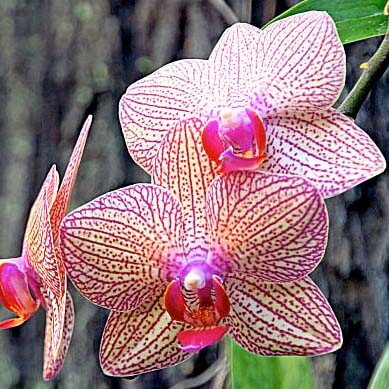
Phalaenopsis (Moth Orchid)
With Christmas behind us, many of us may have received an Orchid as a gift from a loved one. Over the past two or three years, these enigmatic plants of south-east Asia, have become very affordable and are currently flooding the house plant market with Orchids in full bloom for as little as £5. The Phalaenopsis is by far the most common Orchid available and also one of the toughest.
Caring for your Orchid
To understand how to look after your Orchid, you must firstly consider it’s natural habitat. Orchids thrive amongst rocks, within old stone walls and between the limbs of mossy trees in warm and very humid tropical environments.
Temperature
Orchids like warm homes. There require a shady spot in your house and should never be subjected to temperatures below 14.4 degrees Celsius (58 deg.Fahrenheit).
Watering
I like to rest my Orchids on a tray filled with wet gravel. The plants benefit from the evaporation of water from the tray. Never let your Orchid plants dry out; water with tepid rainwater for the best results – never icy cold!
Situation
Orchids seem to do better if placed in a bright (but not direct sunlight) position in a bathroom. Warm moist air from the shower or bath should yield similar conditions to those found in tropical forests and make your Orchid feel at home.
Repotting Orchids
If you need to repot your Orchid, then do so using the proper Orchid compost which has a consistency of bark chippings. Use a clear plastic pot, so that the roots can be exposed to daylight; this is highly beneficial for these kinds of plants.
Encouraging new flowers
Phalaenopsis Orchid flowers grow along a spike or stem. To encourage new spike formation, after your Orchid has stopped flowering, clip the stem to about 1 inch of its base and above the first growing node. Misting your Orchid’s leaves with warm water is said to encourage new flower growth.
Orchid growing tips
- Don’t let the special Orchid compost dry out.
- Feed once a month with specialist Orchid fertiliser.
- Keep out of direct sunlight
- Keep Orchids in a warm and humid place (if possible).
